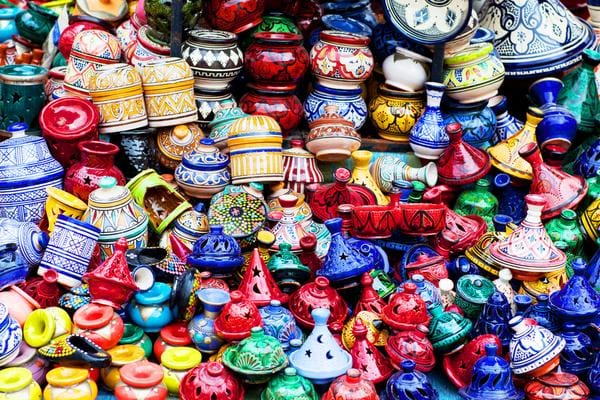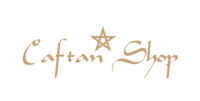Traditional Moroccan crafts combines influences and elements from a number of different cultures and societies. There are aspects of secular Berber traditions, Moorish elements ofAndalusia, Arab influences, Jewish impacts, and European influences, in particular nations that once had colonial powers in Morocco, such as France, Spain and Portugal.
Many craft objects use local resources, such as wood, stone, clay, leather, wool and metalsBut you will also find articles that use imported products such as silk and marble. The most common patterns are geometric shapes, Arab calligraphy and natural elements.

Competencies and artisanal techniques are generally transmitted from generation to generation, either father in son or master to apprentice. A master craftsman is called Maalem. The Morocco Work hard to ensure that traditional processes and techniques do not disappear, and there are several government initiatives to promote different trades and survival.
Crafts are present, among others, in architecture, household goods, textiles, clothing and decorative items.
Zone
The zellige is a type of tile that is often called Moroccan mosaic. The zellige, which dates back to the 700s, is a highly qualified craftsmanship. The colored ceramic tiles are chopped in small shapes, then fixed in plaster to create amazing patterns.
A high level of precision is required, both for shaping parts and for their implementation in the plaster. Zellige patterns are used as ornamentation on soils and walls, as well as pillars, fountains and other surfaces. The geometric patterns attract the eyes and are present in almost all major buildings, including mosques, palaces and madrasas.
Beautiful examples of zelliges are also often visible in traditional historic riads and hammams. The city of Fez is the fatherland of Zellige.
Tadelakt
The Tadelakt is a plaster technique that creates a simple but beautifully smooth and attractive finish. His story goes back some 4,000 years. Originally from the hills near Marrakech, the Tadelakt was developed by Berber groups to seal the water storage tanks.
Today, this velvety finish is commonly used to decorate walls and places that require a waterproof finish, such as swimming pools, fountains, steam rooms and sinks. The technique consists of spreading a lime coating paste on a surface, then polishing with a river stone.
Natural soap is then used to seal the work. The Tadelakt was traditionally red, but any pigment can be added to change the color of the plaster. It is often said that the Moroccan tadelakt creates one of the most beautiful plaster finishes in the world.
GEPS
Also known as Stucco, the GEPS is a type of decorative plastering. The plaster is usually white, but it can be tinted in any color according to the preferences. Very detailed patterns are created with plaster to add beauty to buildings.
The GEPS is made by spreading a thick layer of wet plaster, which is then cut and shaped before drying and hardening. The craftsman must be fast and accurate. We often see the carved plaster on the top of the walls, where they join the ceiling, on the columns, like panels along the walls, almost like a separation, around windows and doors, and there may also be large. Exquisite carved plaster sections.
The geometric patterns are the standard and attention to detail is obvious. The plaster can be painted with bright colors for a more striking effect.
Tazouakt
The Tazouakt is the name given to painted wood ornate. Today, you have more chances to see this craft in the old palaces and mansions. It is commonly used on ceilings, windows and doors.

Mashrabiyya
The moucharabieh is another artisanal technique that uses wood. It is an open lattice composed of tiny pieces of wood connected to each other to form patterns. Current patterns are stars, diamonds, squares, rectangles and octagons.
Small spaces let the light enter the light while offering great intimacy. This technique is often used for parts separations and window blinds. Cedar wood is often used.
MARQUETRY
The marquetry is particularly common in the coastal city of Essaouira. Thuya wood is carved to make magnificent furniture, such as tables, chairs and chests, as well as decorative objects such as boxes and frames. Chess games, toys and plates are other examples of objects that can also be manufactured in marquetry.
The carved parts are embellished by the marquetry, using various woods like ebony, walnut and the cedran. Articles can be decorated with fine metal wires, camel bone and mother-of-pearl.
METALLURGY
Moroccan craftsmen create a multitude of amazing metal objects, using various metals and techniques. Whether large furniture, small accessories or decorative items, you will find many magnificent metal objects in Morocco.
For example, lanterns and lamps, teapots, trays, candlesticks, frames, tables and chairs. Copper and brass are two of the most commonly used metals. The finely hammented details add to the aesthetic appeal, and zellige tiles can be inserted into the parts for more effect.
Buildings can have impressive doors with heavy metal knockings and iron nails. You can also see wrought iron details outside many buildings, especially around windows and balustrades. Spectacular jewels are made of gold and silver, often encrusted with precious stones.
Damascene
Designated locally by the French term of Damascinerie, the Damaskinage is a type of work of the striking metal that is produced only in Meknes. The long craft process consists of cutting and hammering metal leaves to create great shapes.
Fine scissors are then used to create narrow slits in the metal. This is the beginning of the motive. These slots are then filled with fine son of silver, gold or copper; The second metal is cleverly hammered in the slots to finish the pattern.
The article is then cooked in an oven or heated to the torch to melt the fine metal. After cooling, the craftsmen polish the pieces to eliminate the asperities and often use lemon juice to shine the articles. Damascinage can be used for a wide range of articles, including jewelry, vases, plates, lamps, ornamental figures, shields and swords.
Pottery
Morocco has a long tradition of manufacturing pottery, Fez and Safi being particularly famous for their pottery production heritage. The pottery can be declined in many colors, although blue and white and dark green items are more traditional. The patterns are generally geometric.
Created by hand, then cooked and enamelled, the current items include tajine pots and other cooking utensils, vases, bowls and plates.

WEAVING
The history of weaving in Morocco goes back thousands of years. The country is known for the production of exquisite carpets and carpets, with reasons and Arab and Berber techniques found in all Morocco.
The different tribal groups have unique styles and we say that each carpet tells a story and contains the memories of its creator. The carpets are used to cover the floor, like blankets, like saddle mats, as funeral lunches, like wall hangings and hot outdoor clothes. Carpets are often grouped into two broad categories: urban mats and rural carpets.
Urban carpets are usually those that are produced using Arab techniques in places like Rabat, Fez and Marrakech. Rural mats come from the Berber Tribes of the Mountains. Other woven items may include bags, coats, cushion covers and others.

EMBROIDERY
Fez, Meknes, Tetouan and Rabat are fine embroidery centers. This practice also has long roots in Berber communities.
Superb items are created by fine embroidery, including complex floral and natural patterns on clothes, curtain covers, table paths and wedding clothes, to name a few examples. The embroidery can be made using wires of all colors, but the most luxurious items use fine silver or gold threads.
Leather's work
Due to the presence of large tanneries, Fez, Marrakech and Taroudant are particularly known for their excellent leather items. Resistant animal skins are worked and shades to produce a wide range of items, including shoes, bags, belts, poufs, portfolios, stool, etc.
Traditional shoes, known as Babouches, may be among the most unusual leather items in Morocco. These shoes, which look like slippers, are often decorated with colorful embroidery.







Leave a comment